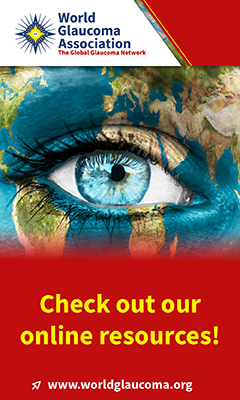advertisement

Abstract #8863 Published in IGR 5-2
Perfusion with the olfactomedin domain of myocilin does not affect outflow facility
Goldwich A; Ethier CR; Chan DW; Tamm ERInvestigative Ophthalmology and Visual Science 2003; 44: 1953-1961
PURPOSE: Mutations in the MYOC gene coding for myocilin are associated with elevated intraocular pressure (IOP), and recombinant myocilin, produced in a prokaryotic expression system, has been reported to affect aqueous outflow facility. This study was conducted to test whether perfusion with a fragment of recombinant myocilin (containing the full-length olfactomedin domain), produced in a eukaryotic expression system, affects facility. METHODS: Two hundred and ninety-three EBNA cells were transfected by a vector containing the BM40 signal peptide, a human cDNA coding for myocilin, and a polyhistidine tag (HisTag) sequence. Recombinant protein was isolated by Ni-chelate chromatography, and characterized, and perfused into cultured anterior segments of human and porcine eyes. RESULTS: Recombinant myocilin was secreted as a approximately 55-kDa intact protein and two fragments arising from cleavage of the recombinant protein at amino acid 215. The C-terminal fragment, containing the entire olfactomedin domain, was successfully isolated. When perfused into human and porcine eyes, this C-terminal fragment did not appreciably affect outflow facility. CONCLUSIONS: Although the olfactomedin domain appears to be important for the function of myocilin, perfusion with a recombinant myocilin fragment containing this domain does not change outflow facility. It is possible that both the olfactomedin and N-terminal domains (including the leucine zipper) must be present for myocilin to have full function. Alternatively, posttranslational modifications of myocilin may have a major impact on protein function.
Dr. A. Goldwich, Department of Anatomy, Molecular Anatomy, and Embryology, University of Erlangen-Nurnberg, Erlangen, Germany
Classification:
2.5.1 Trabecular meshwork (Part of: 2 Anatomical structures in glaucoma > 2.5 Meshwork)
11.9 Gene therapy (Part of: 11 Medical treatment)
3.5 Molecular biology incl. SiRNA (Part of: 3 Laboratory methods)